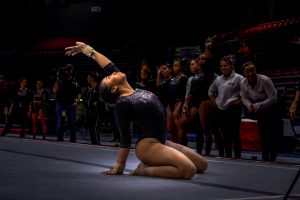High schools, colleges nationwide remain diverse
November 12, 2008
While the United States elected its first black president last week, the evidence of bygone eras exists at many colleges and universities across the nation. NIU isn’t one of them, as the diversity of its student body suggests.
Historically black colleges and universities (HBCUs) came to be around during the early 1900s as a result of reconstruction and the rule that African-Americans couldn’t attend white universities without benefactors, said Laverne Gyant, director of the Center for Black Studies.
Anyone can attend HBCUs regardless of skin color or ethnicity, Gyant said. “I think HBCUs have a lot to offer. Many of our leaders have graduated from HBCUs,” Gyant said, herself an alumnua of a HBCU. “It is a different culture from here: There’s not a difference between mainstream and African-American history.”
Gyant also said there are Hispanic-serving and Native American-serving institutions across the country.
Reminders of the days when schools were separated by sex remain in the United States in the form of all-male and all-women colleges. Sean Mullen, senior health education major, said he would have no qualms attending such an institution.
“I don’t think gender really plays a role in the education level you get,” he said. “If you want to go to an all-male college, I think you should be able to.”
Last month, public school officials in Chicago proposed the creation of the “gay-friendly” Social Justice Pride Campus, a high school that would be welcome to any student, regardless of sexual orientation.
It would incorporate gay and lesbian history into its curriculum and would act as a safe environment for students of any sexuality, officials said in their proposal. A comparable campus, Harvey Milk High School, already exists in New York.
But will a similar college ever be created?
Associate Communication Professor Craig Seymour doesn’t think so.
“At the high school level, people aren’t ready to identify themselves,” he said. On the other hand, “a lot of universities have gay and lesbian groups.” He stated NIU’s Lesbian, Gay, Bisexual and Transgender Studies Program as an example.
Seymour acknowledged that the campus in Chicago would be a good idea as gay and lesbian high school students are often looked at as outcasts by their peers. It’s easier for them to fit in once they get to college, he said.






